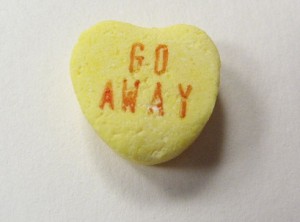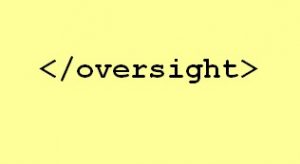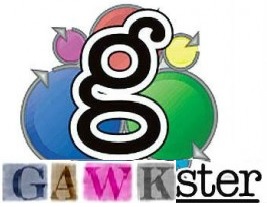Former members of a limited liability company, who participated in the development of four pieces of software while a part of the company, sued the LLC and its remaining members for copyright infringement. Defendants moved for summary judgment, arguing that plaintiffs’ infringement claims must fail because defendants had not used the allegedly copyrighted software outside of the licensing agreements the LLC signed while plaintiffs were still with the company. The court granted defendants’ summary judgment motion.
Plaintiffs agreed that the software had not been used outside the license agreements with companies the LLC had entered while plaintiffs were with the company. But plaintiffs still sought injunctive relief with respect to their infringement claims.
To demonstrate copyright infringement, plaintiffs were required to prove “(1) ownership of a valid copyright, and (2) copying of constituent elements of the work that are original.” Feist Publ’ns, Inc. v. Rural Tel. Serv. Co., 499 U.S. 340, 362, 111 S.Ct. 1282, 113 L.Ed.2d 358 (1991)). In this case, plaintiffs essentially conceded that the second element of the Feist test was not met.
The court cited Arista Records, LLC v. Doe 3, 604 F.3d 110, 117 (2d. Cir.2010)) to note that in the second Feist element, “the word copying is shorthand for the infringing of any of the copyright owner’s five exclusive rights described in 17 U.S.C. § 106”. Those exclusive rights allow the owner to: (1) reproduce the copyrighted work; (2) prepare derivative works based upon the copyrighted work; (3) distribute copies of the copyrighted work; (4) perform the work publicly; and (5) display the copyrighted work. Because plaintiffs conceded that defendants had not used the software outside of the license agreements with its customers that were made while plaintiffs were still a part of the LLC, defendants had not infringed on plaintiffs purported exclusive rights.
Plaintiffs nevertheless claimed that they were entitled to injunctive relief to prevent defendants’ potential future use of the copyrighted software. Plaintiffs were required to show that: (1) they had suffered an irreparable injury; (2) that remedies at law were inadequate to compensate that injury; (3) that the balance of hardships warranted a remedy in equity in favor of plaintiffs; and (4) that the public interest would not be disserved by a permanent injunction.
Here, plaintiffs conceded that they had not suffered an injury – the copyrights had not been infringed. Instead, plaintiffs were arguing for a prospective injunction to prevent defendants from infringing upon a copyright for which there was no evidence defendants intended to infringe. The court denied the injunction, holding that a prospective injunction could be entered only on the basis of current, ongoing conduct that threatened future harm.
Brightharbour Consulting, LLC v. Docuconsulting, LLC, 2014 WL 1415186 (N.D.Ga. April 14, 2014)
Evan Brown is an attorney in Chicago, advising clients in technology transactions, intellectual property disputes, and other matters involving the internet and new media.

 Plaintiff wrote an XML parser and made it available as open source software under the
Plaintiff wrote an XML parser and made it available as open source software under the  The Copyright Act is a federal law, and is drafted to “preempt” state laws that purport to give individuals rights that are “equivalent” to rights granted under the Copyright Act. The purpose of this preemption is to displace the effect of any equivalent state law, so that the federal framework gets to deal exclusively with copyright.
The Copyright Act is a federal law, and is drafted to “preempt” state laws that purport to give individuals rights that are “equivalent” to rights granted under the Copyright Act. The purpose of this preemption is to displace the effect of any equivalent state law, so that the federal framework gets to deal exclusively with copyright.  The owners of an LLC successfully published a magazine for several years, but the business declined and the company eventually filed bankruptcy. While the bankruptcy proceedings were still underway, one of the owners started up a new magazine publishing the same subject matter. He essentially took over the old company’s website to promote the new magazine. And he posted to the LLC’s Facebook page on three separate occasions, “reminding” those who liked the page to instead like his new company’s Facebook page.
The owners of an LLC successfully published a magazine for several years, but the business declined and the company eventually filed bankruptcy. While the bankruptcy proceedings were still underway, one of the owners started up a new magazine publishing the same subject matter. He essentially took over the old company’s website to promote the new magazine. And he posted to the LLC’s Facebook page on three separate occasions, “reminding” those who liked the page to instead like his new company’s Facebook page.  Does an online service provider forfeit the safe harbor protections of the Digital Millennium Copyright Act if, when terminating the account of a repeat infringer, it does not delete all content the repeat infringer uploaded — infringing and noninfringing alike? A recent decision involving the antique internet technology Usenet sheds light on an answer.
Does an online service provider forfeit the safe harbor protections of the Digital Millennium Copyright Act if, when terminating the account of a repeat infringer, it does not delete all content the repeat infringer uploaded — infringing and noninfringing alike? A recent decision involving the antique internet technology Usenet sheds light on an answer. 


 The Hollywood Reporter
The Hollywood Reporter 